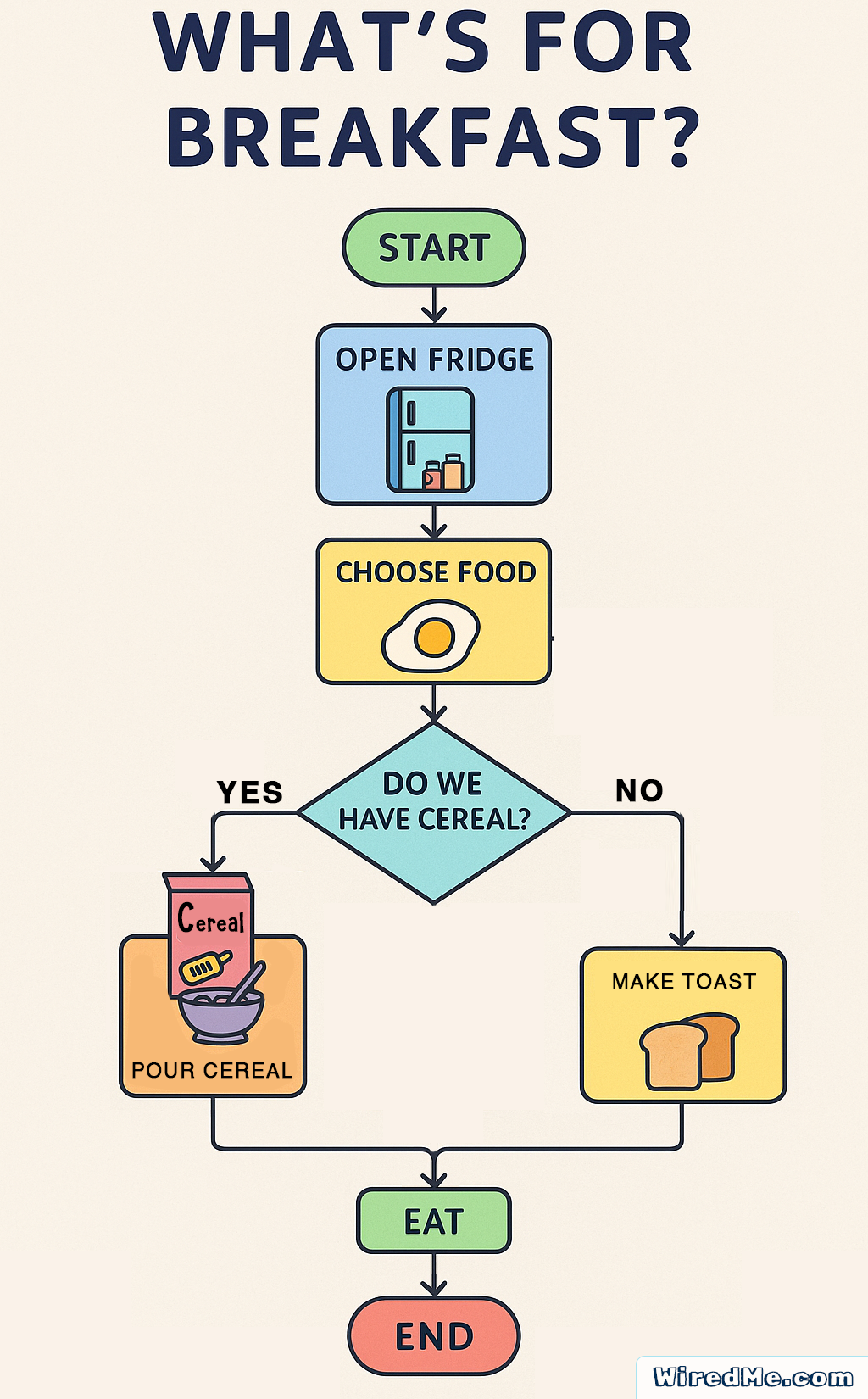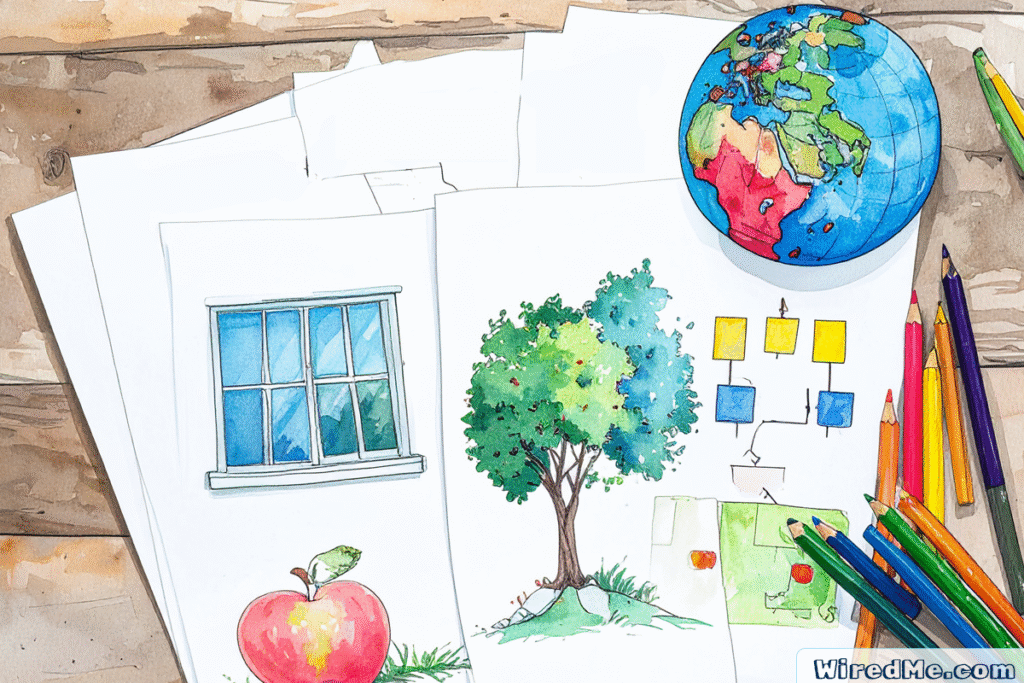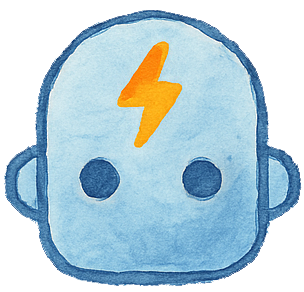When kids face a task that feels too big or confusing, a simple tool can help. Flowchart thinking for kids is all about drawing out the steps, so they can slow down, organize their thoughts, and understand what needs to happen first, next, and last.
This kind of step-by-step thinking builds confidence, supports problem solving, and even lays the foundation for learning to code.
What Is Flowchart Thinking for Kids?
Flowchart thinking for kids means showing how a process works by drawing it out visually. Each step of a task is written inside a box, and arrows connect those boxes to show what happens next.
Instead of just telling your child what to do, you help them see the path from beginning to end. This helps kids understand cause and effect, choices, and consequences. It also gives them a clear way to follow routines, complete tasks, or solve problems on their own.
If you’re looking for a simple definition or example, this Kiddle article on flow charts breaks it down in a kid-friendly way, with pictures and real-world examples.

Why It Helps Kids Think Clearly
Flowchart thinking for kids is more than just a fun activity. It supports early learning in several important ways:
- Step-by-step thinking: Kids learn to follow a logical order
- Decision-making: They explore what happens when there is more than one choice
- Visual learning: Great for kids who understand better by seeing
- Confidence: Kids feel more in control when they can plan and predict outcomes
Big tasks start to feel smaller once they are broken into steps.
Research shows that visual tools like flowcharts support problem-solving and algorithmic understanding. For example, this STEM in the Middle article explains how flowcharts help students break down problems, understand decisions, and plan clearly before starting any coding task. The article also shows how students begin to understand programming concepts by breaking problems into steps and making decisions clear.
How to Teach Flowchart Thinking at Home
You don’t need any special tools. Just grab paper, pencils, and maybe some sticky notes.
1. Choose a task
Pick something your child already does, like brushing teeth or making a sandwich.
2. Talk through the steps
Ask your child to name each part of the process. Write one step per box.
3. Connect with arrows
Show what comes next using arrows between the boxes.
4. Add decision points
If something changes (like “we’re out of jelly”), draw a diamond-shaped box to show choices and outcomes.
5. Review and explain
Ask your child to walk you through their chart. Let them own their thinking.

Easy Activities to Try
Here are some fun ways to use flowchart thinking for kids in daily life:
- Snack Planner: Draw the steps to make a favorite snack, with choices like peanut butter or jam
- Morning Routine: Map out getting dressed, brushing teeth, and packing a backpack
- Silly Story Paths: Make a funny choose-your-own-adventure comic with arrows and options
- Chore Flowcharts: Create a visual checklist for cleaning a room or feeding a pet
These activities can be done on paper, whiteboards, or even outdoors with chalk.
How It Connects to Coding
Flowchart thinking for kids is a natural lead-in to early programming. Coders often use flowcharts to plan before they ever write a line of code.
By practicing this type of thinking now, kids begin to understand:
- Algorithms: A list of steps that solve a problem
- If/Then Logic: How computers make decisions
- Planning Ahead: Seeing the structure before taking action
It’s a powerful, screen-free way to build early STEM skills.
Final Thoughts
Flowchart thinking for kids helps make big ideas feel smaller and more manageable. It encourages children to break down tasks, see their own logic, and gain confidence in how they think.
Whether your child is planning their day or starting to explore coding, drawing out the steps is a smart and simple way to get there.
Want more ideas? Visit our Unplugged Coding Activities page to grab a free printable and explore more screen-free STEM fun.


Leave a Reply